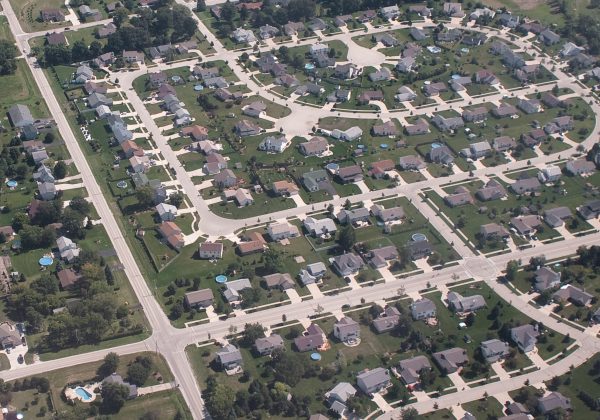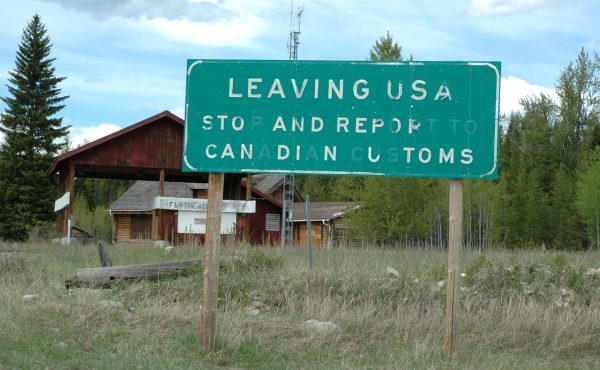Canada is acting quickly to reposition our trade economy to become more resilient, diverse and self-reliant. We need a similar re-calibration of Canada’s housing system to address our deepening affordability problem. Housing is foundational for a strong Canada, and we must focus on housing that is more affordable, cost-effective to construct, energy efficient and climate resilient.
We can start by growing Canada’s non-profit housing sector.
Consider this: Ninety-five percent of Canada’s housing supply is built by the private sector, yet an increasing proportion of Canadian households cannot afford to buy or rent these market-rate homes. Canada not only faces a shortage of housing for low, moderate and middle-income households; our reliance on the private sector to build our homes tethers Canada’s housing system to market cycle swings.
For instance, as condo inventory builds up in large metros such as Greater Toronto, Vancouver and Ottawa, private developers are holding back on starting new projects until excess inventory is absorbed, prices rebound, and investors return from the woodwork to pre-purchase units and facilitate financing. Even with the Bank of Canada’s recent rate drop, CMHC expects the housing market to remain skittish amidst the uncertainty of tariffs and warns that today’s dip in housing starts could negatively impact future supply.
Canada can fill this gap with homes built directly for Canadians, rather than for investors, by rebooting the non-profit housing sector. Here’s how it can happen:
Cutting the profit margin
Canadians may be surprised to learn that, unlike private builders, non-profit and cooperative housing developers don’t have a profit motive and construct homes essentially at cost. Eliminating the off-the-top profit margin translates into more affordable homes with lower rents compared to the same types of rental units in the private market.
A recent study by the Cooperative Housing Federation found that coop rents in five major Canadian cities were on average twenty-five percent lower than “market” rents. What’s more, the differential widens over time, with co-op rents becoming one-third lower on average than market rentals. Cooperative housing, a type of non-profit housing, is not exposed to speculative market forces and large rent increases, so rents stay relatively stable over the long term and homes are protected from the troubling practice of financialization.
Growing Non-profit Housing with Financing
Another fact not widely understood: the non-profit and co-op housing sector relies primarily on loans, not subsidies, which providers pay back to the government. Cooperative homes, as a result, are geared towards moderate- and middle-income households, as the costs to build and operate housing are comparable to those for the private sector. However, non-profits frequently apply for federal construction grants or receive other sources of funding to include deeply affordable units for lower-income households.
In the 1970s, non-profit and cooperative housing represented up to 25 percent of all housing construction in Canada, thanks to low interest federal loans – typically two percent rates and thirty-year amortizations. With today’s interest rates now relatively low, replicating this approach in 2025 is not inconceivable. In fact, CHMC already earmarks billions in financing to the private sector with up to 50-year amortizations for its Apartment Loan Construction Program along with GST rebates.
An austerity-minded federal government can simply redirect a portion of this financing to the non-profit and cooperative sector, and increase this proportion over time as the non-profit sector re-builds its capacity.
Prioritizing Public Land
Allocating public land for non-profit developers can save costs by 15 to over 20 percent, depending on location, according to a 2021 BC study. Various levels of government currently provide public land for private developers to build a mix of market-rate and “below market” (i.e., a percentage of market rent) units, but these moderately less expensive units remain tied to the private market.
Non-profits, on the other hand, can deliver a greater number of affordable units not exposed to the speculative private market. Experts suggest that public land should be reserved 100 percent for non-market housing (non-profit and co-op/ social housing) to optimize housing affordability for more Canadians and protect these homes from market rent increases in perpetuity.
Lowering Costs and Building Greener
Building with wood can save up to 20 percent per square foot compared to concrete and steel. Depending on the site, wood-frame can accommodate 100 to 170 units, making midrise a viable option. B.C. and Ontario are in the process of permitting single stairways (“single egress”) for buildings up to six-storeys (potentially eight storeys in BC), which improves cost efficiency of a midrise project by another five percent.
Wood-frame medium-sized buildings are less carbon-intensive than concrete and steel towers, and lend themselves to less parking infrastructure, which saves tens of thousands per stall, reduces embodied carbon associated with underground levels, and cuts tailpipe emissions due to fewer private vehicles, particularly in proximity to public transit. The long-term and community nature of cooperatives, land trusts and other non-profit housing types can facilitate car-share and bike-share services, working with municipalities where programs exist.
Beyond construction-related emissions, non-profit housing is well suited to make up-front investments in energy efficiency, which pay off over time in lower energy bills. However, a 2024 study by BC Housing demonstrates that high-performance construction doesn’t have to cost more and can be on par with conventional building systems even from the start.
More Supply and Steady Jobs
While unsold condo units now saturate some Canadian metropolitan real estate markets, it’s not likely non-profits can overbuild anytime soon, as these homes are in high demand. A 2025 Abacus poll found that nearly two-thirds of Canadians think non-profit and cooperative housing can help solve the housing crisis. With private market projects on ice, Ontario lost 13,000 homebuilding jobs in 2024. Non-profits, on the other hand, can build through ups and downs and provide much-needed steady jobs for Canadians.
The potential savings associated with non-profit housing can add up to a decent business case. And so would the benefits to Canadians and our country. For the next federal government, non-profit housing should be a no-brainer.
photo by Richard Clewiston (cc)
As executive director at TMU’s City Building Institute for eight years, Cherise Burda led research and knowledge mobilization strategies to advance urban sustainability solutions. She currently is an active member of the National Affordability Action Council, and co-founded the Task Force for Housing and Climate in 2023. Follow her on LinkedIn at Cherise Burda.




